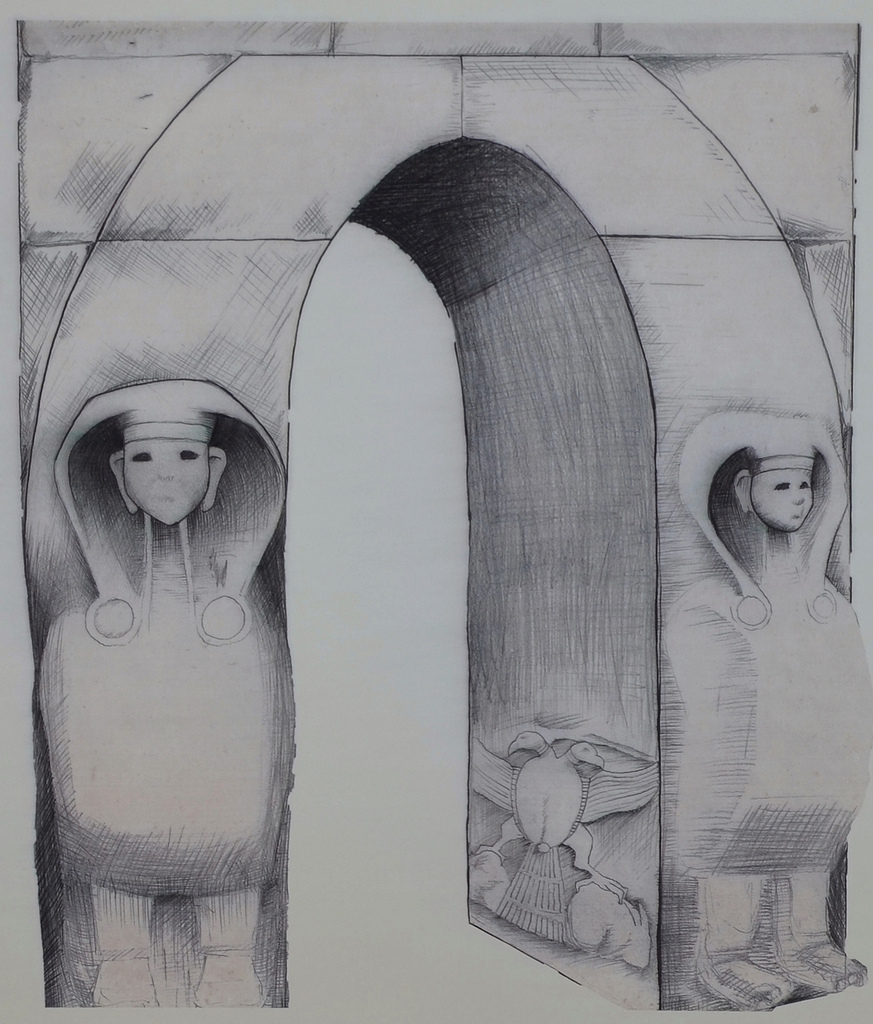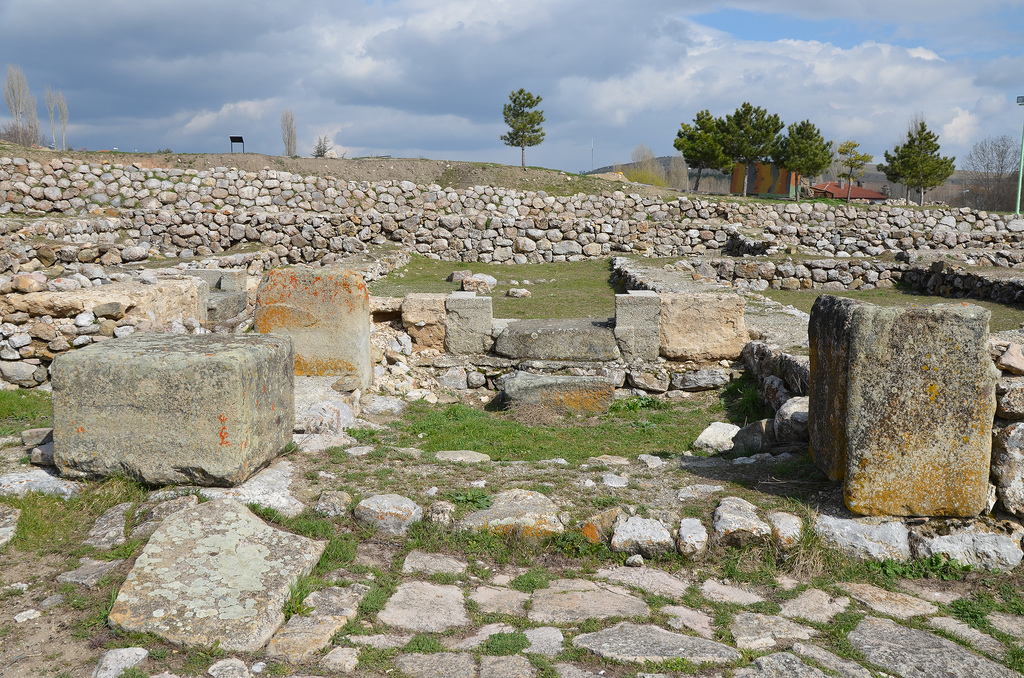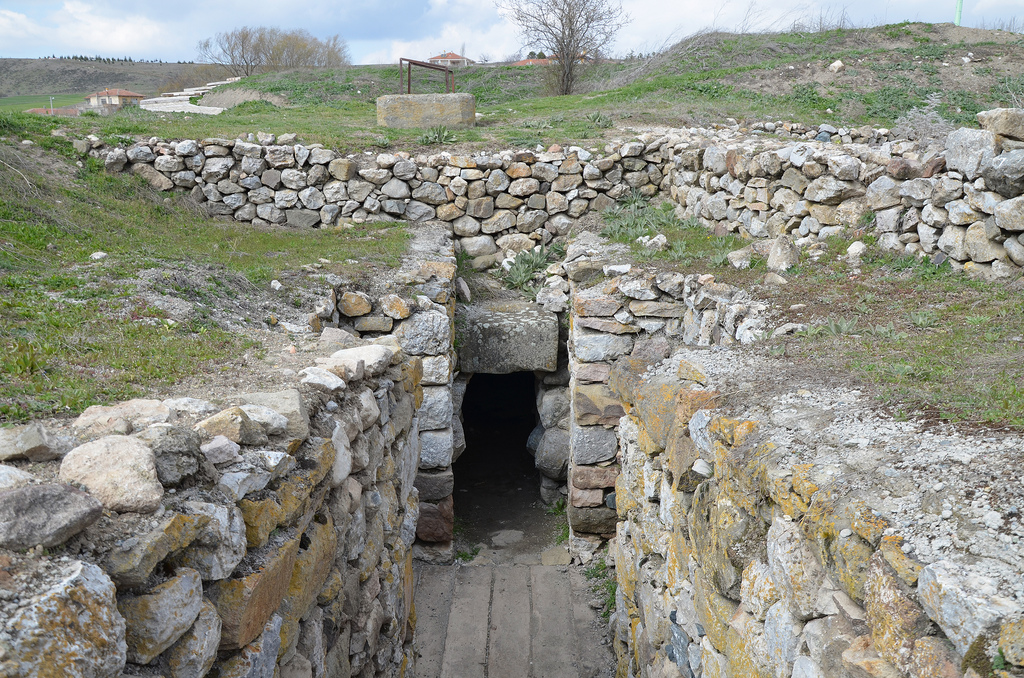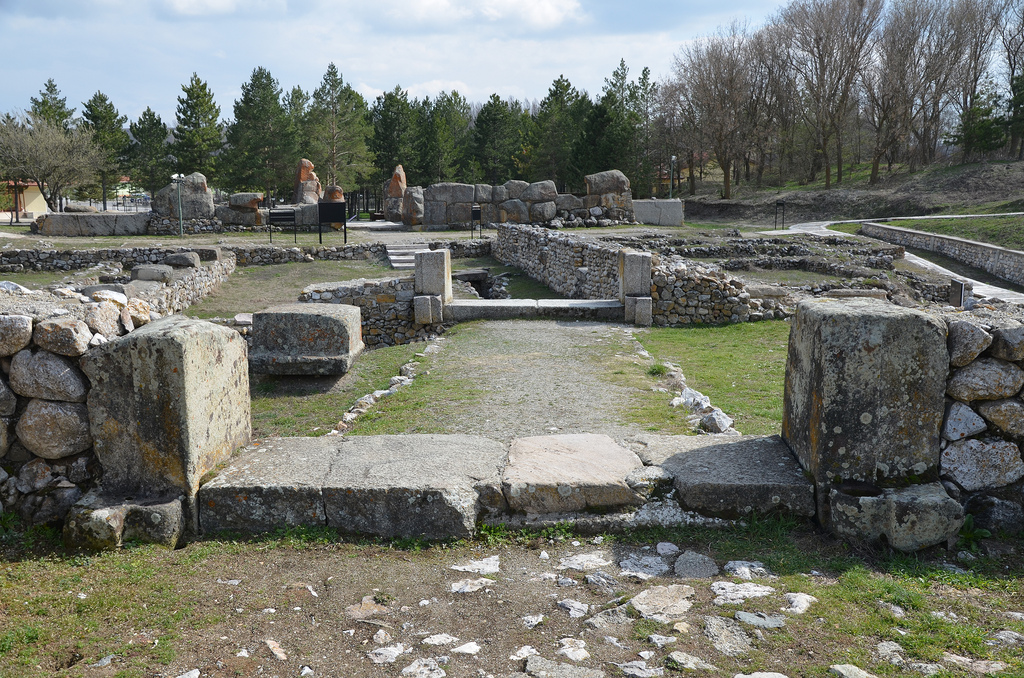Alacahöyük is the site of an important Neolithic and Hittite settlement in central Turkey in the Çorum province, northeast of the ancient Hittite capital city of Hattusa. The mound (Turkish höyük) at Alacahöyük was inhabited since the Chalcolithic Period (4500 BC) and became the centre of the flourishing Hattian culture during the Bronze Age. It was later occupied by the Hittites, who used the city as their first capital before moving over to Hattusa.
Coordinates: 40° 14′ 4″ N, 34° 41′ 44″ E

Alacahöyük was discovered in 1835 by the English voyager W.G. Hamilton. The first excavations started in 1861 by French archaeologist George Perrot, but more extensive work was initiated by the Turkish Historical Association in 1935 and continued until 1948. Since 1997, the excavations have been carried out by Ankara University under the direction of Prof. Dr Aykut Çınaroğlu.
The excavations revealed fifteen layers of a settlement buried under the soil dating back to 5500 BC to 600 BC. The wealthiest and most important layer belongs to the Early Bronze Age. Many treasures have been excavated from the thirteen Hattian royal tombs dating to the 3rd millennium BC. Among these artefacts were bronze sculptures of bulls or deer, ceremonial symbols and sun disks. These artefacts are housed today in the Museum of Anatolian Civilizations in Ankara.
 However, most of the standing remains at Alacahöyük, such as the “Sphinx Gate”, date from the Hittite period that followed the Hattians (1460-1200 BC). At that time, the city was surrounded by a mud brick wall with a stone base. The “Sphinx Gate”, fortified with towers, was the city’s main gate. It was flanked by two sphinx protomes with a relief in its inner parts depicting a double-eagle holding rabbits in its claws. These sphinxes were the protectors of the city.
However, most of the standing remains at Alacahöyük, such as the “Sphinx Gate”, date from the Hittite period that followed the Hattians (1460-1200 BC). At that time, the city was surrounded by a mud brick wall with a stone base. The “Sphinx Gate”, fortified with towers, was the city’s main gate. It was flanked by two sphinx protomes with a relief in its inner parts depicting a double-eagle holding rabbits in its claws. These sphinxes were the protectors of the city.
The lower parts of the towers were decorated with orthostat reliefs depicting a religious ceremony, including a king and a queen praying to a bull before an altar, a lion hunt, sacrificed animals, jugglers, and acrobats. These depictions represented an entire ritual set of cult, libation, hunting and entertainment, including a religious ceremony in honour of the Storm God. The original reliefs are displayed in the Museum of Anatolian Civilizations in Ankara.

A dam dated to 1,240 BC has also survived 1.5 kilometres to the southeast of Alacahöyük. It was one of the numerous dams built against droughts on the order of King Tudhaliya IV in the name of the goddess Hebat. The dam holds about 15,000 cubic meters of water and is Anatolia’s oldest and largest dam. The Alacahöyük dam is still being used today to irrigate fields in the region.
PORTFOLIO





















Links:
- Wikipedia
- Alacahöyük official website (English version under construction)
- Archaeological team prepares 4,000-year-old Hittite meals
- Five Key Historical Sites of the Hittites

Excellent as always.
The dam is a nice place to visit and is close by (although the road is not very good). Amazing to think it is still in use today.
I am curious where you found the model of the city.
LikeLiked by 1 person
I am so sad to have missed the dam! 😦 The model of the city is in the museum of Alacahöyük.
LikeLike
Thank you, this is one of the richest time periods in all ancient history and most interesting. The amount on info is stagering. The writing and power clashes are fun to try to wrap your head around. 18th to 19th dynasty egypt to semetic power to hittite empire and all the powers scattered in between so so great to see excellent pictures they really help get a broader view of what it was like back then.
LikeLiked by 1 person